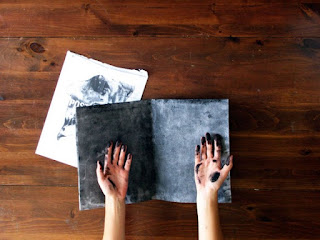D - Describe
I - Interpret
E - Evaluate
T - Theorise
5 reasons why critical analysis is an important part of education, learning and developing your understanding:
- Being able to critically analyse a piece of Graphic Design enables you to understand how it has been created and for what purpose; this information adding to your knowledge and allowing you to utilise this when creating your own designs.
- Standing back from your own work and critically analysing it allows you to criticise its flaws and strengths, which is the only way you can ever progress as a designer.
- Being able to critically analyse something allows me to give good quality feedback which, especially during a group critique, is essential in order for the designer to improve their work.
- Critical analysis gives insight into work being produced in the real world and the quality that is needed in order to become a Graphic Designer
- It allows me to articulate my views of a design in an appropriate manner that is helpful and informative.
Why the critique, or group crit, is useful in the development of your work, skills and opinion:
The group critique is an essential part of the learning environment and developing your work, skills and opinions. It provides an opportunity for peers to give good quality feedback that analyses the designers work, allowing them to alter anything that has become apparent and therefore improve their design. It also means that personal taste becomes less of an influence within the design process, the opinions and views expressed by the rest of the critique group allows the designer to become aware of the way in which their work will be perceived. When critically analysing Graphic Design, it is much easier to criticise the work of others than your own work, mainly due to the fact that you have a personal connection to anything you have created yourself which often blinds you from its, sometimes obvious, flaws. This means that when you and your peers gather and present the work you have produced, they find it much easier to see and inform you of anything that needs changing.
As a group we got together and produced a list of various different criteria on which we judge and evaluate Graphic Design:
- lay-out
- composition
- colour
- communication
- contexts
- concepts
- legibility
- function
- media and method of production
- audience
- scale
- quality of style/execution
- non-visual content
- visual content
My main 5 are:
- Concept. Having a strong concept and thought process behind a design is the most important. Many people can produce pretty and aesthetically pleasing imagery, but it takes a true designer to take a good concept and transform it into a visually interesting design.
Although this design is still very aesthetically appealing, the concept behind the idea is also very interesting. The point behind this image is to compare the icons and stars of today to those of the past. The use of black and white against the colour of the top image represents this vast difference between the two and makes the separation obvious.
- Quality of style/execution. If the actual design work itself is of a bad quality it often means that no matter how well presented and put together the rest of the design is it will be bad.
This design has been very well executed; the content of the design is very clear and the designer has obviously got a very high skill level. The colours that have been chosen have clearly been considered and work well together.
- Colour. A good use of colour is always an indication to the skill and time that has gone into creating a design.
With this design being very minimal, consisting of only very basic shapes within a simple composition, the choice of colour was essential. Clearly the colours have been considered a great deal, each separate rectangle having two colours that work well together. The way in which these colours have been arranged on the page means that there is no focus in a specific area, something that could've happened if the designer wasn't aware of his decisions.
- Communication. Graphic Design is about being able to communicate a message and so if a design cannot successfully or efficiently communicate its message, especially to its intended audience, then I feel that this is very bad design.
Although this calendar is very original and visually interesting, the communication of the design has not been affected. It is still very clear and obvious that this is a calendar, despite it not being very boring and plain.
- Media and method of production. Although it is sometimes more appropriate and effective to keep it simple, using various different methods of production and media often allows the work to become unique and individual.
This design involves the audience very much in the communication of the message. One side of the design has been covered in charcoal, or a substance like that, and the other side appears to be blank. However when the charcoal is rubbed onto the 'blank' side, by the viewer/intended audience, the message is revealed. This is a very clever and unique way to communicate a message and keeps the design fresh and original.






No comments:
Post a Comment